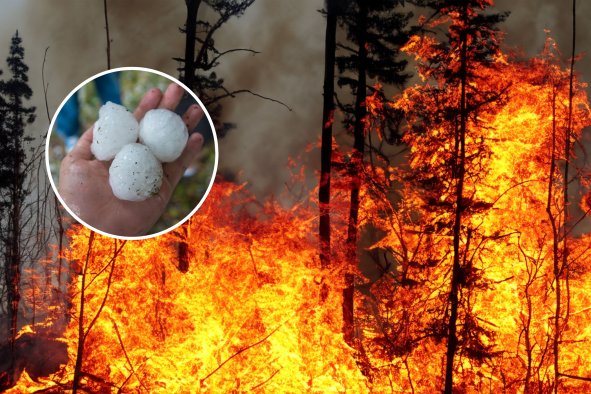The Sierra Nevada mountains have had an unusually average year of snowfall, which scientists say is out of the ordinary.
According to the California Department of Water Resources (DWR), the snowpack in the Sierras was 110 percent of the average for that date as of April 1.
Images taken by MODIS (Moderate Resolution Imaging Spectroradiometer) on NASA's Terra satellite show the snowpack levels on April 2. This near-average level of snowpack is strange, experts say, as recently the mountain range has seen either exceptionally high or low levels of snowpack over the last 10 years.
"The thing about the Sierras is there's no such thing as typical," Noah Molotch, a hydrologist at the Institute of Arctic and Alpine Research (INSTAAR) and NASA's Jet Propulsion Laboratory, said in a NASA Earth Observatory statement. "This year, now that we're near 100 percent of average, that's what's atypical."
In 2023, the snowpack was 232 percent of the average on April 1—the highest snowpack since 1952—while in 2022, it was just 35 percent of normal on April 1.
The thickness and extent of the annual snowpack vary depending on the wetness or dryness of the winter season. During wet winters, like those in 2017 and 2023, the snowpack tends to be substantial, whereas prolonged hot and dry weather in California and Nevada results in very low snowpack levels, as seen in 2007–2009 and 2015. 2015, in particular, was a record-breaking year, with the April 1 levels only at 5 percent of the average for that date.
The El Niño phenomenon in 2015–16 delivered significant rain and snow to the mountains, although the snow levels remained below the long-term average. From October 2016 to April 2017, a series of atmospheric river events doubled the average precipitation for the Sierra Nevada.
Apart from a surge in 2019, snowfall was generally less than average from 2018 to 2022. The western U.S. suffered from severe drought from 2020 to 2023, largely due to a La Niña effect. As La Niña began to diminish in early 2023, a series of atmospheric rivers led to an exceptionally wet winter in California.
El Niño and La Niña are climatic phenomena that are part of a larger pattern known as the El Niño-Southern Oscillation (ENSO). El Niño occurs when sea surface temperatures in the central and eastern Pacific Ocean become significantly warmer than average, and can bring wetter conditions to the southwestern United States and drier conditions to Southeast Asia and Australia. Alternatively, La Niña is characterized by cooler-than-average sea surface temperatures in the central and eastern Pacific Ocean, typically leading to dry conditions in places like the southwestern United States and increased rainfall in Southeast Asia and Australia.
The snowpack hasn't been this close to the average level since 2010, when it hit 104 percent of the mean on April 1.
This year's snowpack looked like it might be much lower than average for a while, as it was only 37 to 53 percent of normal on February 1. However, after a series of atmospheric river storms hit the state in February and March and sent a deluge of snow falling onto the mountains, the snowpack leaped upwards.
"The series of decent-sized storms toward the end of winter turned what initially looked to be a dry winter into one that was surprisingly average," McKenzie Skiles, a snow scientist at the University of Utah, said in the statement.
The fact that the snowpack wasn't too low this year is good news for drought-plagued California, as the Sierra snowpack provides around 30 percent of the state's water needs every year.
Do you have a tip on a science story that Newsweek should be covering? Do you have a question about snowpack? Let us know via science@newsweek.com.
Disclaimer: The copyright of this article belongs to the original author. Reposting this article is solely for the purpose of information dissemination and does not constitute any investment advice. If there is any infringement, please contact us immediately. We will make corrections or deletions as necessary. Thank you.



